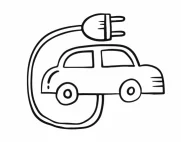About Carbon Monoxide (CO) Gas
Carbon monoxide is a flammable gas that is colorless, tasteless, and odorless. It is the most frequent and dangerous gas found in both indoor and outdoor settings. Humans are unable to smell this gas. Carbon monoxide poisoning is caused by prolonged exposure to this gas at high levels. We can only discover and avoid any disasters caused by this toxic gas by co-monitoring. CO is created both artificially and naturally. CO, on the other hand, is naturally present in the atmosphere but in extremely small amounts. CO, on the other hand, is naturally present in the atmosphere but in extremely small amounts.
























